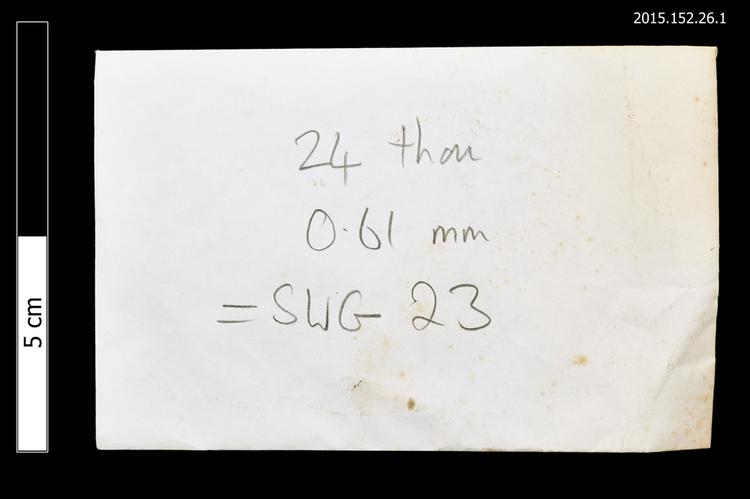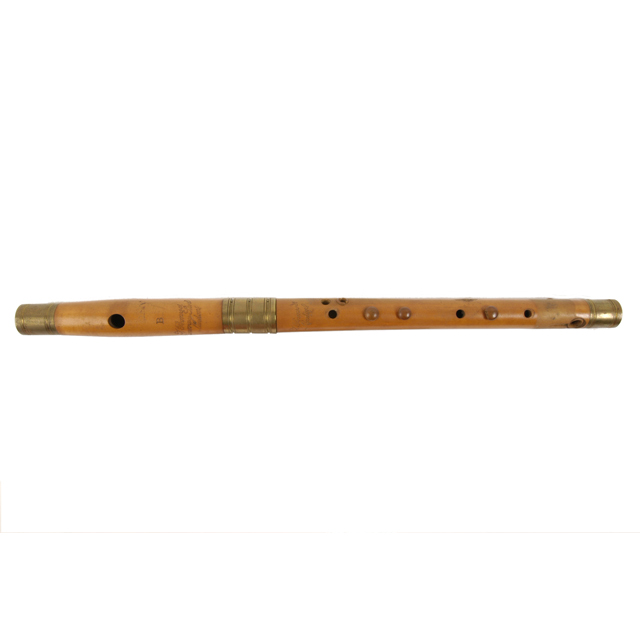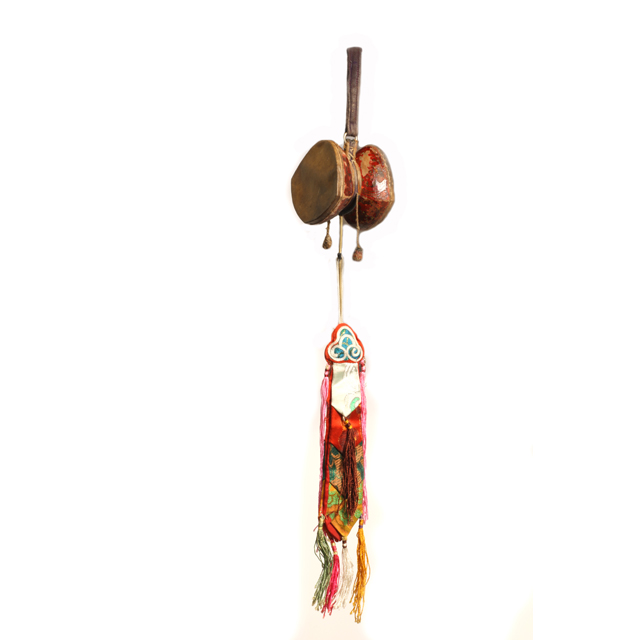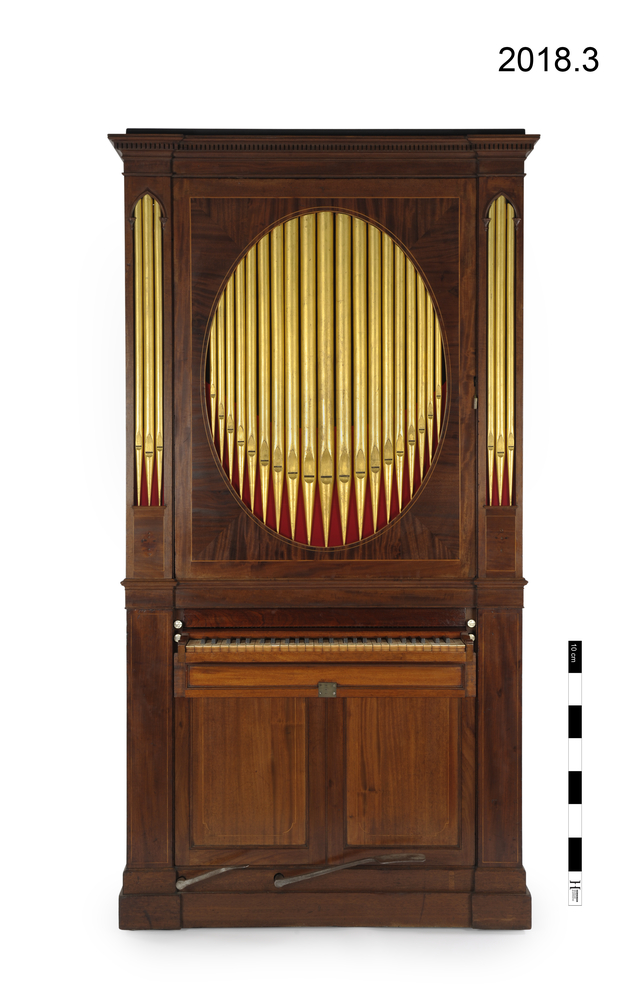
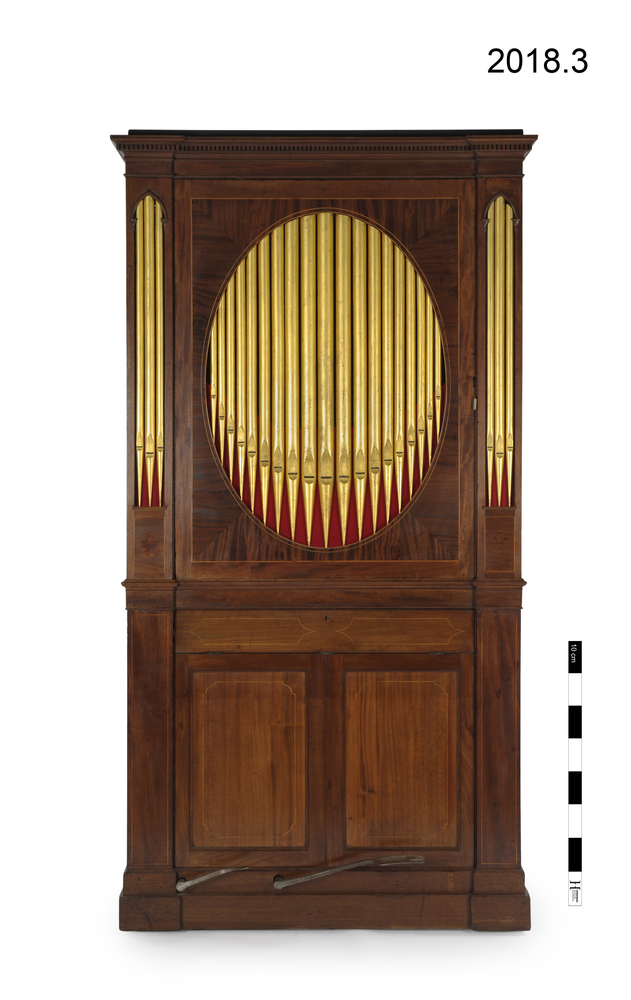
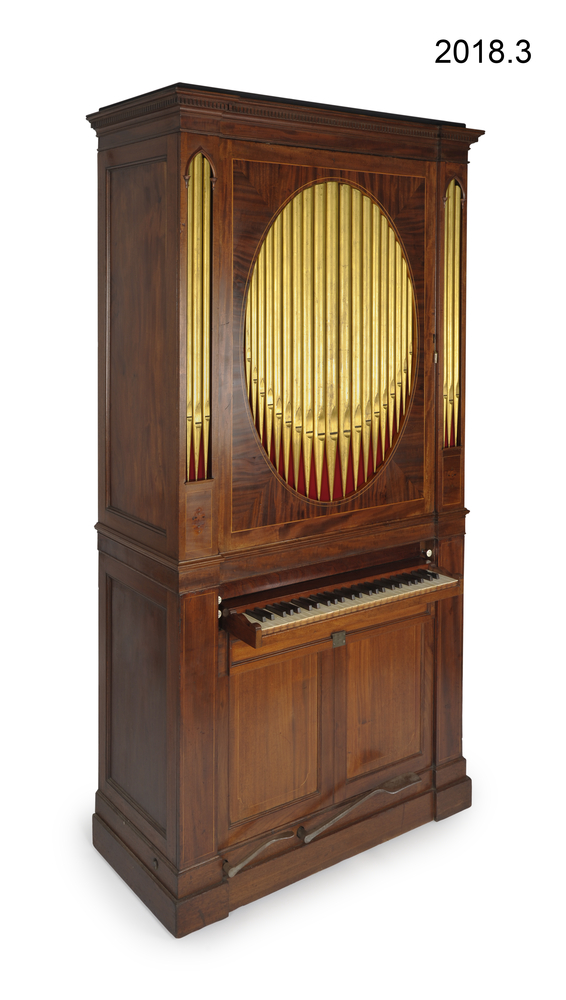
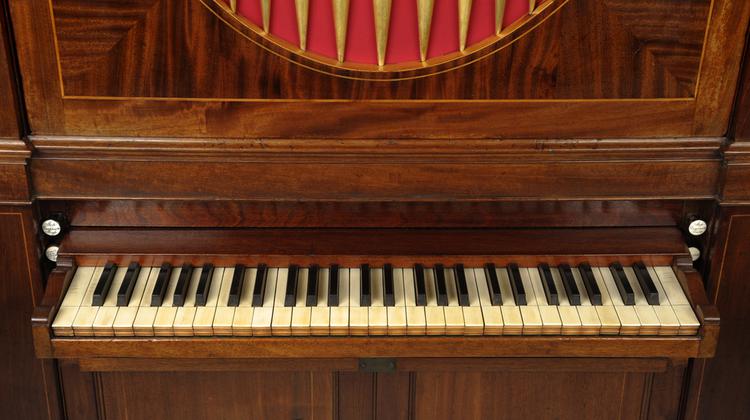
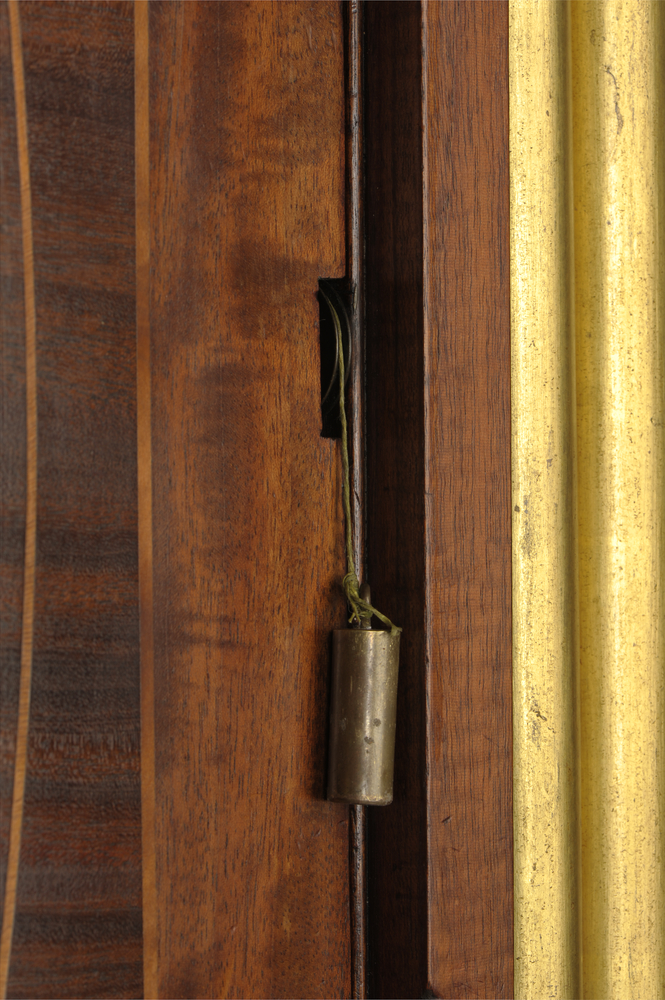
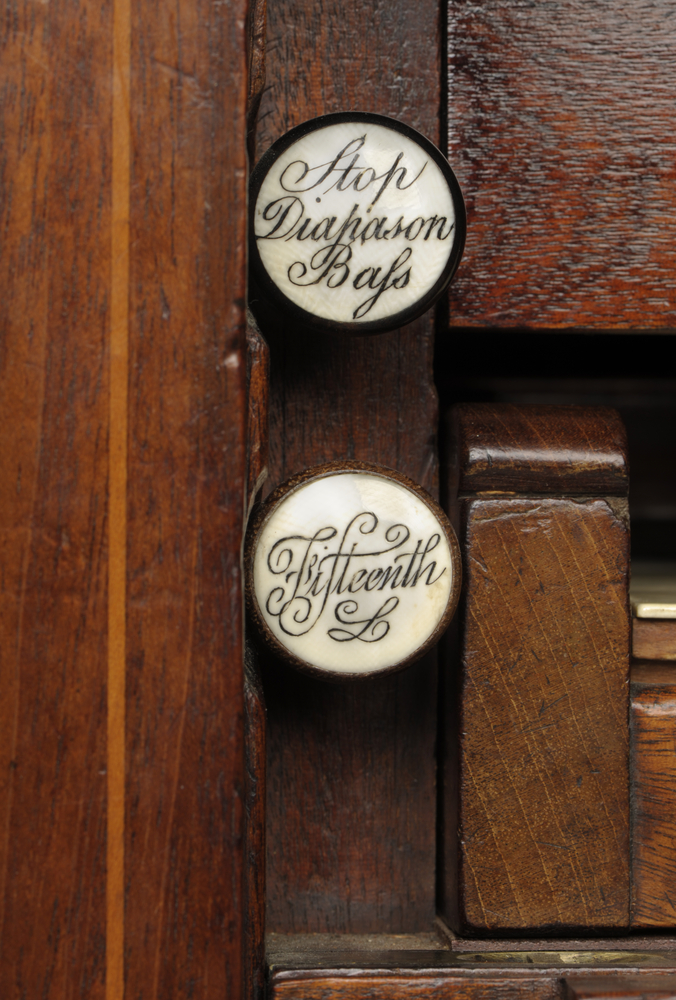
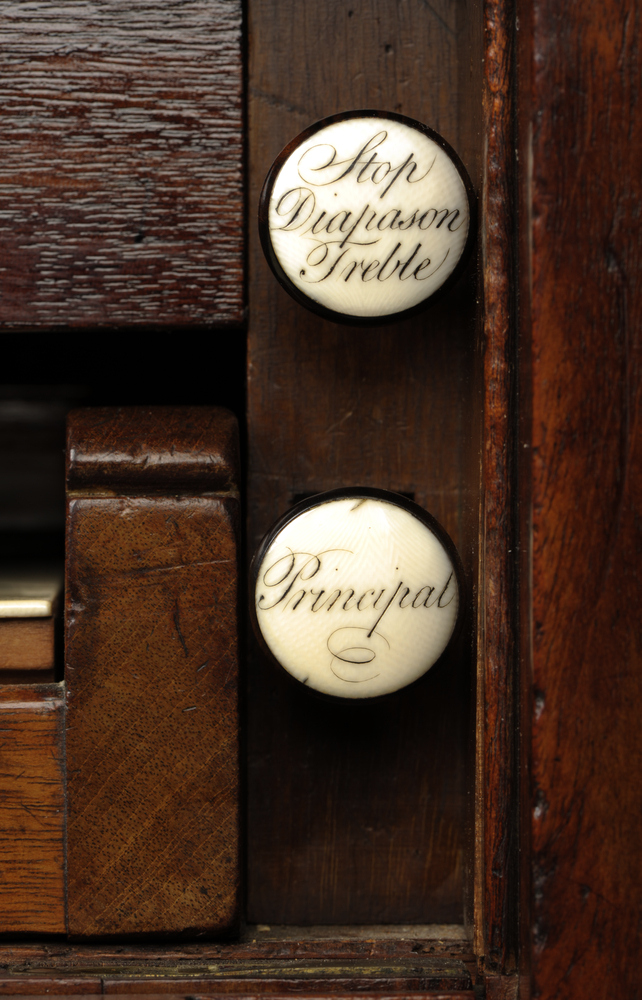
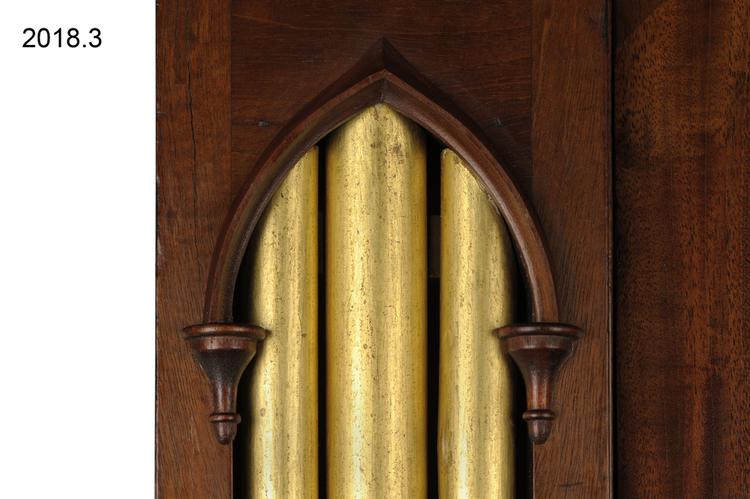
A chamber organ, London, c.1790. Bought with the assistance of the HLF on 11 May 2016 at auction of Finchcocks musical instruments. Acquired at the same time as the Guarracino virginals and the Beyer square piano.
This four stop organ remains in remarkably original condition. Many of its type were made for the increasingly wealthy, culturally-aware commercial classes. Its look and sound conform to English aesthetic ideas which persisted until the 1830s, making it useful for a wide range of repertoire. The bellows which supply the air for the pipes, are fed in the traditional way: by pumping the pedal. During its restoration it was found that the inside of the pallet box had been covered in paper used for writing exercises, which are believed to be original. The attribution is based on these excercise sheets which are also found, uniquely, in other works signed by Beloudy.
SPECIFICATION:
Stopped Diapason bass GG – b stopped wood
Stopped Diapason treble c1 – f3 metal chimney flute
Principal GG-D stopped wood, open metal
Fifteenth open metal (1978, replacing a later Dulciana)
A shifting movement removes the Principal and Fifteenth, the sliders being held in the ‘on’ position with springs.
This unsigned, four stop organ remains in remarkably original condition. Many of its type were made for the increasingly affluent, culturally-aware commercial classes. Its look and sound conform to English aesthetic ideas which persisted until the 1830s, making it useful for a wide range of repertoire. The bellows which supply the air for the pipes, are fed in the traditional way: by pumping the pedal. During its restoration it was found that the inside of the pallet box had been covered in paper used for writing exercises, which are believed to be original. The attribution is based on these excercise sheets which are also found, uniquely, in other works signed by Beloudy. Formerly at Finchcocks Museum of Keyboard Instruments, this instrument was acquired through the support of the National Lottery Heritage Fund.




